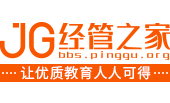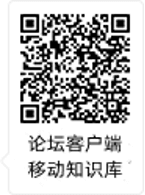By The editorial board
Ministers gathering this week in Ottawa face a challenge that elevates the adjective “daunting” to previously unexplored heights. They will attempt to restore a battered 70-year-old institution to its former role to help defuse an increasingly bitter struggle for economic supremacy by two of the world’s greatest trading powers. To attempt this mammoth task they will be armed with little more than persuasive diplomacy and the power of good ideas.The meeting was called by the Canadian government and includes representatives from a dozen economies including the EU and Japan. Attendees will try to reform the World Trade Organization enough to placate Donald Trump, who regards it as a rogue agent hostile to US interests, without alienating China, which senses that it is being ganged up on by rich countries.
In practice it may be impossible to bridge this gap, particularly since Mr Trump sees China as a broad-spectrum foe across political and strategic as well as economic fronts. In that case, there is little that the other countries can do for the moment except try to keep the multilateral flame alive.
Apart from its clumsy negotiating structure, which requires unanimity among member governments for anything to happen and gives sadly few powers to the institution’s secretariat, there are some widely accepted faults in the WTO.
Its rule book has not been updated since the completion of the last successful round of multilateral trade talks in 1994. It works tolerably well for traditional economic sectors in market economies where the boundaries between market and state are fairly clear. But for a country such as China, where such lines are consistently blurred, it is difficult to use WTO disciplines on subsidies and other trade-distorting interventions.
There are signs that China would accept some tighter rules. But the price of that will not just be some innovations that Beijing itself wants, such as an agreement making it easier to invest abroad, but also the US agreeing to a ceasefire by lifting its unilateral tariffs. That is unlikely to happen, at least under Mr Trump, unless the US accepts that China is fundamentally dismantling its interventionist machinery.
Washington’s other main demand, for reform of the WTO’s dispute settlement process, sees the US largely isolated. Even though it was instrumental in setting up the system, the US dislikes what it sees as judicial over-reach, particularly in rulings of the organisation’s appellate body against America’s use of antidumping and antisubsidy duties. Its refusal to appoint any new judges is bringing the system to a halt.
This is also a tricky issue to solve. Short of simply appointing judges who will ignore existing jurisprudence, it is hard to imagine what will placate the US. The other members of the WTO can try to keep the system going by constituting a new dispute settlement body to which they voluntarily subject themselves. But without the world’s largest economy and the former anchor of the world trading system, it is an unsatisfactory solution.
As long as Mr Trump regards world trade as a zero-sum game, Chinese interests as intrinsically opposed to American ones, and all global institutions as objects of suspicion, reforming the WTO enough to get him to re-engage will be extremely difficult. Governments meeting this week in Ottawa may find themselves designing a model that can only be used when a future, more internationally minded, administration is in the White House. So be it. Some diplomatic initiatives are painfully slow to show results, but no less worthwhile for that.




 雷达卡
雷达卡




 提升卡
提升卡 置顶卡
置顶卡 沉默卡
沉默卡 变色卡
变色卡 抢沙发
抢沙发 千斤顶
千斤顶 显身卡
显身卡







 京公网安备 11010802022788号
京公网安备 11010802022788号







